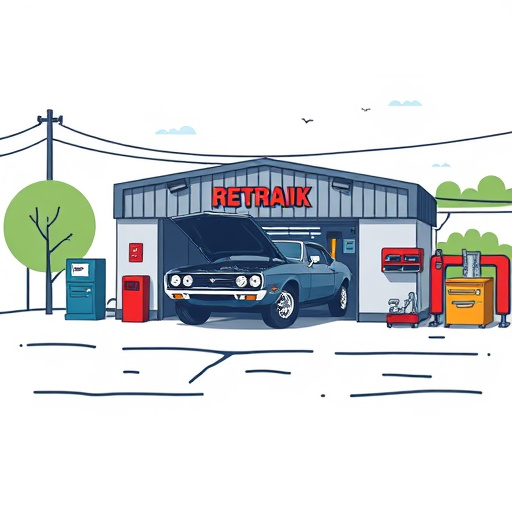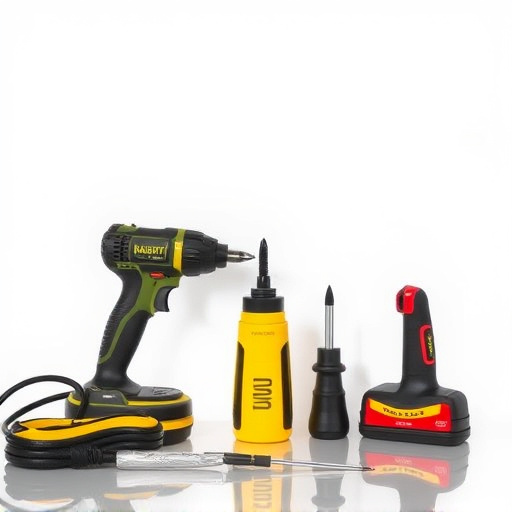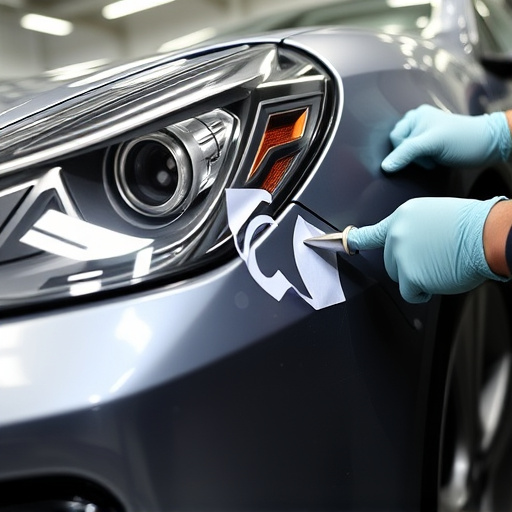Category: weather stripping replacement
Weather Stripping Replacement: A Comprehensive Analysis
Introduction
Welcome to an in-depth exploration of a crucial aspect of building maintenance and sustainability: weather stripping replacement. In today’s world, where environmental considerations and energy efficiency are at the forefront of many industries, understanding how to properly maintain and replace weather stripping is becoming increasingly vital. This article aims to guide readers through the intricacies of this process, highlighting its importance, potential challenges, and future prospects. By the end, you’ll have a comprehensive understanding of why weather stripping replacement is not just a maintenance task but a strategic move towards more sustainable and resilient buildings.
Understanding Weather Stripping Replacement: A Foundation
Definition and Core Components
Weather stripping replacement refers to the process of removing and replacing worn-out or damaged weather stripping around windows, doors, and other exterior openings in buildings. Weather stripping is a collective term for flexible materials, typically made from rubber, vinyl, or foam, that seal gaps between a window or door and its frame, preventing air, water, and noise from entering or escaping. These strips act as a barrier, ensuring the longevity and energy efficiency of structures by maintaining indoor comfort year-round.
The primary components include:
- Door and Window Frames: The outer edges where weather stripping is applied.
- Weather Stripping Material: As mentioned, rubber, vinyl, or foam are common choices for their flexibility and durability.
- Adhesives: Used to secure the weather stripping in place, ensuring it remains sealed against the frame.
- Gaskets (optional): For enhanced sealing, gaskets can be added to create a tighter fit between the window/door and the frame.
Historical Context and Significance
The practice of using weather stripping dates back centuries, with early forms appearing in ancient civilizations like Greece and Rome. However, its modern application gained prominence during the 20th century as energy conservation became a global concern. With the rise of energy-efficient building practices, weather stripping evolved from a simple sealing mechanism to a critical component in achieving thermal comfort while minimizing heat loss or gain.
Today, weather stripping replacement is essential for several reasons:
- Energy Efficiency: Properly installed weather stripping can significantly reduce heat transfer through windows and doors, leading to lower heating and cooling costs.
- Indoor Air Quality: By sealing out drafts, it helps maintain a comfortable indoor environment, reducing the need for excessive ventilation.
- Durability and Maintenance: Regular replacement extends the life of weather stripping, preventing damage from UV exposure, aging, and wear and tear.
- Aesthetics: Modern weather stripping designs can enhance the overall look of a building, offering a seamless finish to exterior features.
Global Impact and Trends
The concept of weather stripping replacement has transcended geographical boundaries, with nearly every region adopting practices that emphasize energy efficiency and sustainability. However, the implementation and trends vary based on local climates, architectural styles, and cultural preferences.
Regional Variations:
- Northern Europe: Known for its harsh winters, countries like Germany and Scandinavia have long embraced comprehensive weather stripping solutions, focusing on high-quality materials to withstand extreme conditions.
- North America: The United States and Canada have seen a surge in energy-efficient building practices, with weather stripping replacement becoming a standard procedure during renovation projects.
- Asia Pacific: Countries like Japan and South Korea are leaders in innovative weather stripping technology, integrating smart sensors for automatic adjustments based on environmental conditions.
- Middle East: With hot desert climates, the region has focused on reflective and low-e coatings on windows, along with advanced weather stripping to mitigate heat gain.
Key Global Trends:
- Eco-Friendly Materials: There is a growing demand for weather stripping made from sustainable materials like recycled rubber and biodegradable vinyl.
- Smart Home Integration: Weather stripping is increasingly being designed to work in conjunction with smart home systems, allowing automatic adjustments based on occupancy and environmental factors.
- Digitalization of Installation: Advanced technologies are being employed to streamline the installation process, ensuring precise measurements and faster project completion.
- Enhanced Sealing Techniques: Developers are experimenting with new sealing methods, such as multi-point seals and magnetic strips, to improve overall insulation performance.
Economic Considerations: Market Dynamics and Impact
The weather stripping replacement market is a vital component of the broader construction and building materials industry. Understanding its economic aspects provides insights into its role in global economies and local markets.
Market Size and Growth:
- According to recent reports, the global weather stripping market size was valued at USD 3.2 billion in 2021 and is projected to grow at a CAGR of approximately 4% from 2022 to 2030.
- The growth can be attributed to rising energy costs, increasing focus on sustainable building practices, and the need for improved indoor air quality.
Investment Patterns:
- The construction sector, particularly in residential and commercial buildings, is a significant investor in weather stripping replacement as part of their renovation and new build projects.
- Governments worldwide are also allocating funds to retrofit existing structures, driving demand for energy-efficient solutions, including weather stripping.
- Private investors in real estate often consider energy-efficient features as value-added amenities, leading to increased spending on high-quality weather stripping.
Economic Impact:
- Weather stripping replacement contributes to local economies by creating employment opportunities in manufacturing, installation, and related services.
- Improved energy efficiency through proper weather stripping can lead to reduced utility bills for building occupants, fostering a positive economic impact at the individual level.
- On a larger scale, governments benefit from lower energy consumption, which can contribute to national sustainability goals and international commitments like reducing carbon footprints.
Technological Advancements: Driving Innovation Forward
The field of weather stripping replacement has witnessed several technological breakthroughs that have revolutionized its capabilities and potential. These advancements not only enhance performance but also offer new avenues for sustainability and automation.
Smart Weather Stripping:
- Temperature-Responsive Materials: Some advanced weather strips are designed to expand or contract based on temperature changes, providing automatic sealing without external control systems.
- Integration with IoT: Internet of Things (IoT) devices can be integrated into weather stripping, allowing remote monitoring and adjustment of sealing mechanisms for optimal energy efficiency.
Digital Measurement and Installation:
- Laser Scanning Technology: This technology enables precise measurements of door and window frames, ensuring accurate cutting of weather stripping for a perfect fit.
- Automated Installation Systems: Robotic arms and automated tools are being developed to streamline the installation process, reducing labor costs and improving consistency.
Eco-Friendly Innovations:
- Biodegradable Materials: Researchers have created biodegradable vinyl and rubber alternatives derived from renewable resources, offering an eco-conscious solution for weather stripping disposal.
- Recycled Content: Some manufacturers are incorporating recycled materials into their products, closing the loop on waste management and promoting sustainability.
Policy and Regulation: Shaping the Industry
Governments play a pivotal role in regulating and encouraging the adoption of energy-efficient practices, including weather stripping replacement. Various policies and regulatory frameworks have been established worldwide to drive sustainability and reduce environmental impact.
International Agreements:
- Paris Agreement: While not directly focusing on weather stripping, this global accord emphasizes the reduction of greenhouse gas emissions, which is closely tied to energy-efficient building practices.
- UN Sustainable Development Goals (SDGs): Goal 7, “Affordable and Clean Energy,” includes targets related to improving energy efficiency in buildings, indirectly influencing weather stripping replacement.
Regional Regulations:
- European Union (EU) Directive: The EU’s Energy Performance of Buildings Directive requires member states to implement minimum energy performance standards for new and renovated buildings, encouraging the use of efficient weather stripping.
- North American Building Codes: In countries like Canada and the US, building codes often mandate specific energy efficiency measures, including proper sealing with weather stripping.
Incentives and Rebates:
- Many governments offer financial incentives, grants, and rebates to encourage homeowners and businesses to invest in energy-efficient retrofits, including weather stripping replacement.
- Tax credits for installing energy-efficient windows and doors are common, making the process more affordable and attractive to consumers.
Challenges and Criticisms: Overcoming Barriers
Despite its numerous benefits, weather stripping replacement is not without challenges. Addressing these issues is crucial for the widespread adoption of this practice.
Common Challenges:
- Initial Cost: High-quality weather stripping and professional installation can be expensive, deterring some property owners from investing in proper replacement.
- Accessibility: Replacing weather stripping in hard-to-reach areas or on historic buildings may require specialized equipment and skills, increasing costs and complexity.
- Material Durability: While advanced materials have improved durability, some still suffer from UV degradation, requiring more frequent replacement in outdoor environments.
Proposed Solutions:
- Incentive Programs: Governments can provide long-term financial incentives to offset initial costs, encouraging widespread adoption and fostering a culture of energy efficiency.
- Educational Campaigns: Raising awareness about the benefits of weather stripping through public campaigns can dispel misconceptions and encourage proactivity in building maintenance.
- Innovative Material Development: Continued research into durable, eco-friendly materials will address concerns about material longevity and waste management.
- Standardized Installation Practices: Establishing industry standards for installation procedures ensures consistency and quality, reducing potential issues related to improper sealing.
Case Studies: Real-World Success Stories
To gain practical insights, let’s explore a few case studies where weather stripping replacement has been successfully implemented, along with the lessons learned from these projects.
Case Study 1: Green Retrofit in Urban Loft Apartments
Location: Toronto, Canada
Challenge: An old industrial building was converted into modern loft apartments with large windows and exposed brick walls. The original weather stripping was inadequate, leading to drafts and high heating costs.
Solution: Property managers invested in advanced smart weather stripping that integrated IoT sensors. The system automatically adjusted sealing based on indoor-outdoor temperature differences, improving energy efficiency without requiring manual adjustments.
Outcome: Tenants reported significant reductions in heating bills, and the building’s carbon footprint decreased by 25% within a year. The project gained recognition for its innovative approach to sustainable living.
Case Study 2: Historic Building Restoration
Location: Paris, France
Challenge: A restored 19th-century mansion had original wooden windows with delicate frames. Replacing the weather stripping while preserving the historical integrity of the building posed a unique task.
Solution: Craftspeople created custom, hand-fitted weather stripping using period-appropriate materials and techniques. They carefully measured each window frame to ensure a seamless fit, maintaining the building’s aesthetic appeal.
Outcome: The project won an award for excellence in historic preservation, demonstrating that weather stripping replacement can complement architectural heritage while offering modern comforts.
Case Study 3: School District Energy Efficiency Initiative
Location: Seattle, Washington, USA
Challenge: A school district aimed to reduce energy consumption and operating costs across its fleet of buildings. Many schools had outdated windows and doors, making weather stripping an essential part of the retrofit strategy.
Solution: The district partnered with local manufacturers and installers to provide bulk discounts on high-performance weather stripping. They also implemented a training program for facility managers to ensure proper installation techniques.
Outcome: Within three years, the school district achieved a 30% reduction in energy costs, leading to significant savings and improved indoor environments for students and staff.
Future Prospects: Looking Ahead
The landscape of weather stripping replacement is continually evolving, with emerging trends and technologies setting the stage for an even more sustainable future.
Potential Growth Areas:
- Smart Buildings Integration: As the concept of smart homes expands, weather stripping will play a crucial role in integrating buildings with their environments, allowing automatic adjustments to create comfortable indoor spaces.
- Renewable Energy Focus: With increasing emphasis on renewable energy sources, there will be a corresponding need for weather stripping that complements these systems, such as solar panels and wind turbines.
- Building as a Service (BaaS): This emerging model, where building owners partner with service providers to offer buildings as a managed service, may lead to more frequent weather stripping replacements as part of regular maintenance packages.
Emerging Technologies:
- Aerogel Insulation: This lightweight, superinsulating material can be integrated into weather stripping for enhanced thermal performance, making it an attractive option for cold climates.
- Biophilic Design: Incorporating natural elements into buildings will drive demand for weather stripping that supports indoor air quality and human well-being while maintaining energy efficiency.
- Advanced Automated Installation: Robotic systems capable of precise, complex weather stripping installations could revolutionize the industry, reducing labor costs and improving project timelines.
Strategic Considerations:
- Collaborative Industry Efforts: Continued collaboration between manufacturers, installers, researchers, and policymakers will be essential to address challenges and drive innovation in weather stripping technology.
- Global Standardization: Establishing international standards for weather stripping performance, materials, and installation practices can ensure consistency and facilitate cross-border trade.
- Digital Twin Technology: Creating digital replicas of buildings that include weather stripping systems can enable predictive maintenance and optimize energy performance through virtual simulations.
Conclusion: A Cornerstone of Sustainable Buildings
In conclusion, weather stripping replacement is not just a simple maintenance task but a strategic move towards more sustainable, efficient, and resilient buildings. As the global focus on environmental conservation intensifies, this practice will play an increasingly vital role in reducing energy consumption, mitigating climate change impacts, and fostering comfortable indoor environments.
By understanding its history, global impact, economic significance, technological advancements, policy frameworks, challenges, and future prospects, we can appreciate why weather stripping replacement deserves our attention and investment. As the world navigates the complexities of a changing climate, this seemingly modest component of building infrastructure will continue to be a cornerstone in our quest for sustainable development.
FAQ Section:
Q: How often should I replace weather stripping?
A: The frequency depends on various factors, including climate, usage patterns, and material quality. On average, consider replacing weather stripping every 5-10 years, or sooner if it shows signs of damage or deterioration.
Q: Can weather stripping replacement improve indoor air quality?
A: Absolutely! Properly sealed windows and doors with high-quality weather stripping can significantly reduce drafts and the entry of allergens and pollutants, leading to improved indoor air quality.
Q: Are there tax incentives for weather stripping replacement in the US?
A: Yes, many states offer tax credits or deductions for energy-efficient home improvements, including weather stripping replacement. Check with your local tax authority or consult a professional to understand the specific benefits available to you.
Q: Can weather stripping be recycled?
A: Some types of weather stripping can be recycled, but it varies based on material. Rubber and vinyl weather stripping may be recyclable through specialized programs, while others might require proper disposal at designated facilities.
Q: How do I know if my building needs better weather stripping?
A: Look for signs of drafts, condensation on windows, or high energy bills. Energy audits can also help identify areas where improving weather stripping and sealing could lead to significant savings.
Enhance Performance: Weather Stripping Replacement Tips

Weather stripping replacement protects high-performance cars from debris, extreme weather, and colli…….
Signs Your Doors Need Weather Stripping Replacement

Regularly inspect car doors for worn or damaged weather stripping, which seals gaps and prevents ele…….
Expert Weather Stripping Replacement for Lasting Protection and Satisfaction

Weather stripping, vital for vehicle protection against weather extremes, can degrade over time, lea…….
Essential Today: Replace Weather Stripping for Optimal Home Protection

Weather stripping, a vital component overlooked in vehicle maintenance, protects from weather damage…….
Boost Home Protection & Efficiency with Weather Stripping Replacement

Weather stripping replacement enhances energy efficiency by sealing leaks, reducing bills, and creat…….
Boost Home Comfort with Weather Stripping Replacement Services

Weather stripping replacement is an easy yet effective way to improve home energy efficiency, blocki…….
Real Customer Reviews: Weather Stripping Replacement Insights

Customer satisfaction in weather stripping replacement goes beyond aesthetics to include comfort and…….
Mastering Weather Stripping Replacement for Precise Fit

Weather stripping replacement is vital for Mercedes Benz collision repair, protecting against water,…….
Mastering Weather Stripping Replacement: Match Factory Specifications

Weather stripping replacement maintains vehicle integrity, temperature regulation, and fuel efficien…….








